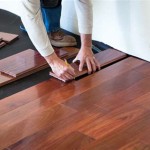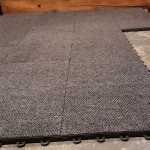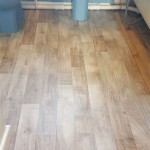Laminate Flooring: A Great Option for Kitchens
Laminate flooring is a popular choice for kitchens due to its durability, ease of maintenance, and affordability. It is made of a high-density fiberboard (HDF) core that is topped with a photographic image of wood or other materials and a protective wear layer. Laminate flooring is available in a wide variety of colors and styles, making it easy to find the perfect look for your kitchen.
One of the biggest benefits of laminate flooring is its durability. It is resistant to scratches, stains, and fading, making it ideal for high-traffic areas like kitchens. It is also easy to clean, requiring only a damp mop or cloth.
Laminate flooring is also affordable, making it a great option for homeowners on a budget. It is typically less expensive than hardwood or tile flooring, and it is easy to install yourself. If you are looking for a durable, easy-to-maintain, and affordable flooring option for your kitchen, laminate flooring is a great choice.
Benefits of Laminate Flooring for Kitchens
There are many benefits to choosing laminate flooring for your kitchen. Here are just a few:
- Durability: Laminate flooring is resistant to scratches, stains, and fading, making it ideal for high-traffic areas like kitchens.
- Easy to clean: Laminate flooring is easy to clean, requiring only a damp mop or cloth.
- Affordable: Laminate flooring is affordable, making it a great option for homeowners on a budget.
- Easy to install: Laminate flooring is easy to install yourself, making it a great DIY project.
- Wide variety of colors and styles: Laminate flooring is available in a wide variety of colors and styles, making it easy to find the perfect look for your kitchen.
Choosing the Right Laminate Flooring for Your Kitchen
When choosing laminate flooring for your kitchen, there are a few things to keep in mind:
- Thickness: The thickness of laminate flooring is measured in millimeters (mm). The thicker the flooring, the more durable it will be. For kitchens, a thickness of 8mm or 12mm is recommended.
- Wear layer: The wear layer is the top layer of laminate flooring that protects it from scratches and wear. The thicker the wear layer, the more durable the flooring will be. For kitchens, a wear layer of AC3 or AC4 is recommended.
- Color and style: Laminate flooring is available in a wide variety of colors and styles. Choose a color and style that will complement your kitchen decor.
Installing Laminate Flooring in Your Kitchen
Laminate flooring is easy to install yourself. Here are the basic steps:
1. Prepare the subfloor: The subfloor must be level and smooth. If it is not, you will need to level it using a self-leveling compound. 2. Install the underlayment: The underlayment provides a cushion between the subfloor and the laminate flooring. It also helps to reduce noise and increase the lifespan of the flooring. 3. Install the laminate flooring: The laminate flooring is installed by clicking the planks together. Start in a corner of the room and work your way out. 4. Trim the flooring: Once the flooring is installed, you will need to trim it around the edges of the room. You can use a jigsaw or a circular saw to do this. 5. Install the moldings: The moldings will cover the edges of the flooring and give it a finished look. You can use a variety of moldings, such as baseboards, quarter rounds, and T-moldings.
Pros And Cons Of 5 Popular Kitchen Flooring Materials

Best Wood Floors In Kitchen Smart Remodeling Llc

Best Waterproof Flooring Options For Your Kitchen Ultimate Guide

Laminate Flooring Types And Prices Forbes Home

Best Wood Floors In Kitchen Smart Remodeling Llc

Kitchen Floor Ideas For Your Home Carpet One

What Is Laminate Flooring Made Of America

Is Vinyl Flooring Suitable For Commercial Kitchen Singapore

15 Kitchen Flooring Ideas For A Sleek And Modern Look

How To Match Kitchen Floors And Cabinets Twenty Oak








